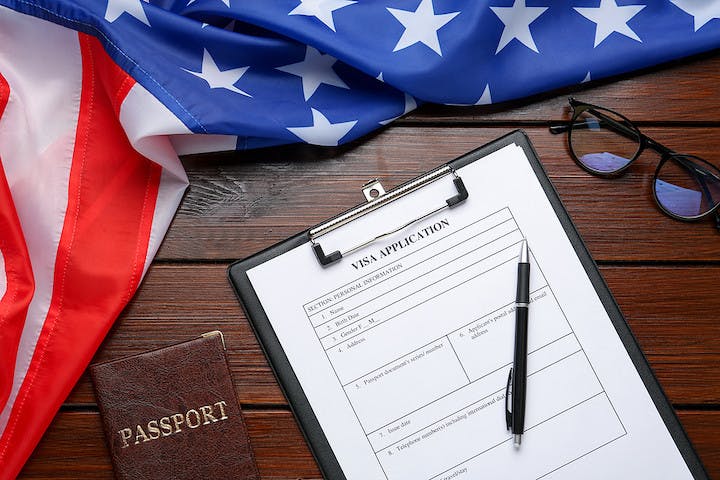Is a muddled immigration policy hurting the US labor supply? That’s a question many are starting to ask.
Let’s look at some facts:
When it comes to jobs, unemployment has been at 3.6% since March – around 5.9 million people. But 11 millions jobs remain open. This means that, essentially, there are about two jobs for each unemployed person in the labor force.
When it comes to labor supply there are several factors that need considering: the first is that America’s labor force was aging long before the pandemic, with falling birthrates and declining immigration leading to the slowest population growth in a century. What’s happened since the pandemic however, is that there’s been an acceleration in retirement. With these seemingly permanent demographic changes, immigrants remain the only source that can make up the gap in labor supply.
So what do we know about immigrants? Well, for a start, they make up significant proportions of workers in most major categories of employment. They comprise about 32.5% of workers in software and computers; 21% in science; 20% in engineering; and about 16% in healthcare. They make up over a quarter of all construction workers and over 20% of the manufacturing and trucking workforce. These are also the fastest growing occupations. The demand for healthcare support workers is estimated to increase by 1.4 million between 2020 and 2030. The current labor shortage has already pushed up wages in the category by 20% in the last three years.
A future with fewer immigrants
New immigrants have made up about 70% of the growth in the labor force since 2010. Over the next two decades, immigrants are likely to be the only source of growth. By 2030, it is predicted there will need to be 165.4 million jobs in America, up from 153.5 million in 2020. But if immigration stays at current levels the labor force will actually decline, falling to 163 million by 2040.
The challenges of having fewer immigrants will be especially hard felt in occupations like healthcare support and manufacturing, where there is high demand for workers that work the night shift, weekends, or have unusual working hours.
Of the 31 million workers that work non-traditional hours nearly 5.5 million of are immigrants. Foreign-born workers are 25% more likely to work weekends than US-born workers with similar characteristics. Immigrant physicians are 21% more likely to work unusual hours than their peers.
This future looks bleak
Census Bureau data shows that net international migration only contributed to a 247,000 person increase to the population between 2020 and 2021. This compares to the prior decade’s high of a 1,049,000 increase in our population between 2015 and 2016 due to immigration. In other words, there has been a 76% decline in immigrants.
Foreign students are also declining. The matriculation rate dropped by nearly 25% between the 2019-20 and 2020-21 academic years, and foreign national graduate student attendance dropped over 20% over the same period.
Fewer immigrants coming to the U.S. means critical sources of talent for American businesses are drying up, contributing to the significant workforce problems companies are currently facing.
Many of tomorrow’s innovators are today’s foreign national college students in the U.S. But these numbers have slid as well.
Outdated visa caps
The immigration system is antiquated and completely disconnected from any business needs.
Quotas for employment-based immigrant visas that include H-1B and H-2B were created in 1990 and have not been updated since. Congress has limited the number of H-1Bs to 65,000 annually, with 20,000 additional visas for foreign professionals who graduate with a master’s degree or doctorate from a U.S. institution of higher learning.
These numbers were arbitrary when the limits were first set and they make no sense now. The US economy has more than tripled from about $6 trillion to almost $21 trillion since 1990, and businesses needs have changed, yet the caps on employment visas has remained unchanged.
And the situation is only getting worse. For the 85,000 H-1B visas that will be issued in 2023, more than 483,000 individual applications have already been filed. This means that only one immigrant will get an H-1B visa for every six applicants. There are about 1.4 million employment‐based immigration cases in the backlog for green cards at the end of 2021. This is nearly ten times the total number of green cards available for employment‐based immigrants. But current law prevents people from any single country from receiving more than 7% of the employment‐based green cards in any year. The practical effect of this is that immigrants from countries such as India, that are disproportionately represented in the backlog, may have to wait 90 years to receive a green card, and more than 200,000 are likely to die waiting, unless there is a change in the law.
H2-B visas that are used by seasonal employers, many of whom are small businesses, are similarly struggling. For the first half of this year, these employers applied for visas for about 136,000 seasonal workers, or about double the annual quota of 66,000.
Improvements are unlikely
Despite these statistics, any significant change in the laws that would make it easier for immigrants to get work visas is unlikely.
The last attempt at comprehensive immigration reform was in 2013, but the bill died in Congress.
Since then, any further attempts to change laws by either party have been stymied because of policy and ideological differences over creating greater openings for immigrants to work in America with legalization of unauthorized migrants.
Employers are pinning their hopes on the RELIEF (Resolving Extended Limbo for Immigrant Employees and Families) Act, currently being discussed in Congress. This bill eliminates the 7% cap for employment-based immigrant visas and eliminates the current cap for employment-based nonimmigrant visas.
But, with Congress set to go on break at end of August, the time to get the bills passed is getting perilously short.
